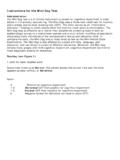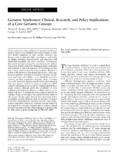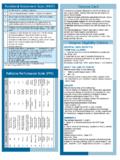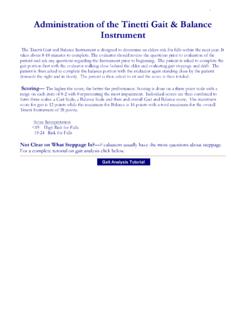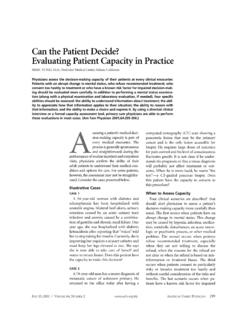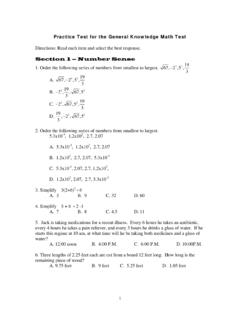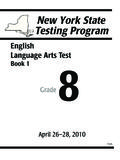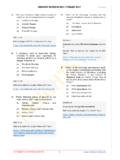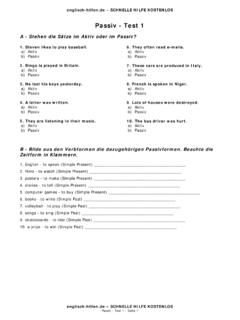Transcription of Administration of the CLOX Page 1 of 2 …
1 Administration of the clox Page 1 of 2. Administration of the clox : Clock Drawing Executive Test Royall, 1998. There is a growing interest in the potential of clock-drawing tests (CDT) as a screen for cognitive impairment. CDT's have been found to correlate significantly with traditional cognitive tests and to discriminate healthy from demented elderly patients. The severity of clock-drawing failures progresses over time in Alzheimer's disease (AD), and correlates with longitudinal changes in cognitive testing. Moreover, CDTs are rapid and well accepted by both patients and clinicians. We are specifically interested in clock-drawing's ability to measure executive control function (ECF).
2 ECFs are cognitive processes that coordinate simple ideas and actions into complex goal directed behaviors. Examples include goal selection, motor planning sequencing, selective attention, and the self-monitoring of one's current action plan. All are required for successful clock-drawing. It is important to measure ECF because executive impairment is strongly associated with functional disability as well as with many significant illnesses, including Alzheimer's disease (AD), major depression, multiple sclerosis, Parkinson's disease and schizophrenia. Unfortunately, few bedside cognitive measures have been designed to assess ECF directly, and formal ECF tests are seldom practical for routine use in clinical settings.
3 This manual describes a CDT ( clox : An Executive Clock-drawing Task) that has been specifically designed to elicit executive impairment and discriminate it from nonexecutive constructional failure. The Executive Clock-Drawing Task ( clox ): The clox has been divided into two parts to help discriminate the executive control of clock- drawing from clock-drawing per-se. The patient is first instructed to draw a clock on the back of the clox form (see pdf file). He or she is instructed only to "Draw me a clock that says 1:45. Set the hands and numbers on the face so that even a child could read them." The instructions can be repeated until they are clearly understood, but once the subject begins to draw no further assistance is allowed.
4 The subject's performance is rated according to the clox , directions, and scored as " clox 1". clox 1 reflects the patient's performance in a novel and ambiguous situation. He or she is presented only with a blank surface and no further guidance regarding the task. The patient is responsible for choosing the clock's overall form (a digital or analog face, alarm clock, wristwatch or wall clock, etc.), it's size, position on the paper, elements (hands, numbers, date indicators), the forms of these elements (hands as arrows, relative lengths, Roman vs. Arabic numerals, etc.). Furthermore, the patient must also initiate and persist in clock-drawing through a sequence of constructional actions (usually drawing the outer circle, followed by placing the numbers if any, followed by setting the time).
5 Finally, he or she must monitor their progress as 2/13/2008. Administration of the clox Page 2 of 2. the task unfolds, both anticipating (placing the 12, 6, 3, and 9 first) and/or correcting errors as they occur. It is just as important to note what a patient does not do during a clock-drawing task. Our clox . form and its verbal instructions have been designed to tempt the patient into, strongly associated but irrelevant behaviors. The circle in the left lower corner is irrelevant to clock- drawing when viewed from the back side of the form, but it tempts the patient to place their clock within its image. We chose the words "hand" and "face because they are more strongly associated with body parts than clock elements, and may trigger semantic intrusions from their more common meanings.
6 The number "4'5" does not appear on a typical clock face, and may intrude into the patient's construction in the form of a digital image (1:45) or hands pointing to the 4 or 5 o' clock positions. Of the 15 available clox points, 13 rate the presence of subject chosen elements. Three points reflect the inhibition of irrelevant distractions, the anticipation of potential spacing errors, and their monitoring or correction. clox scores range from 0-15. Lower scores. reflect greater impairment. The clox 's second step is a simple copying task. The examiner allows the patient to observe him or her drawing a clock in the circle provided on the scoring sheet.
7 The examiner sets the hands again to "1:45", places the 12,6,3, and 9 first, and makes the hands into arrows. The patient is allowed to copy the examiner's clock. Score this clock as " clox 2". 2/13/2008.
